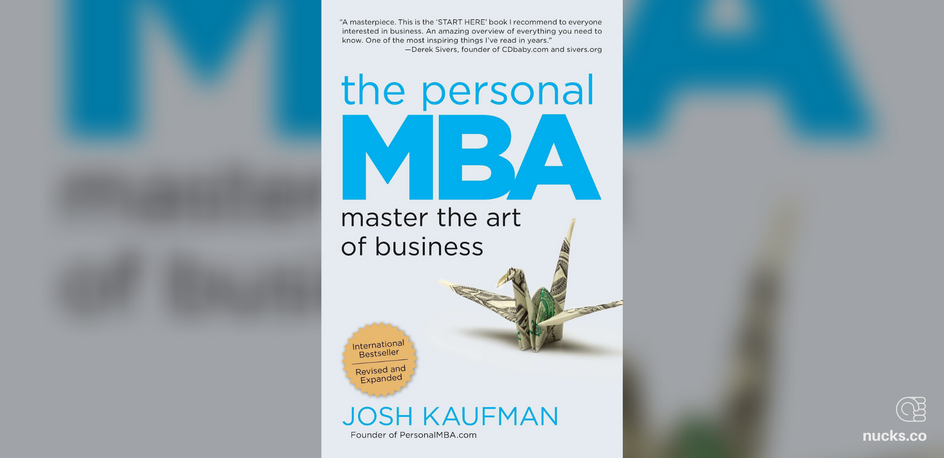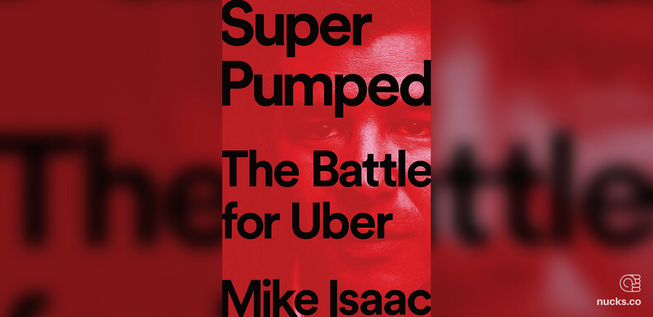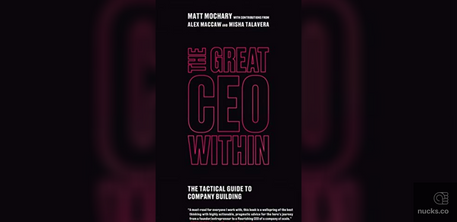Overview
Rating: 9/10
Read More on Amazon
High-Level Thoughts
For any aspiring MBA candidate, this book is a must-read. It dives into a variety, if not all, of business subjects that you would study in top MBA programs. The purpose of the book is to serve as an all-in-one guide so you can teach yourself, save thousands of dollars, and succeed in business without the popular MBA degree.
Key Takeaways
- Don’t get an MBA—educate yourself.
Summary Notes
Imposter Syndrome in Business
Hardly anyone feels comfortable in business. Once you push past imposter syndrome, it’s amazing what you can accomplish. Instead of reading the thousands of books that exist about business, learn what matters most and then start doing.
Skip business school. Educate yourself.
Everyone does not need business education. An example was Charlie Munger. He graduated from Harvard Law in 1948, and without getting a formal business education, he started an investment partnership that outperformed the market by 14 percent compounded annually.
Don’t Get an MBA
Business schools are notorious for picking successful people so they can then take credit for their successes after leaving school. More students are stuck digging themselves out of debt after getting an MBA rather than celebrating the success they imagined.
According to a study done by Jeffrey Pfeffer (Stanford) and Christina Fong (University of Washington), getting an MBA has zero correlation with long-term career success. It also doesn’t impact your total lifetime earnings.
College: two hundred people reading the same book. An obvious mistake. Two hundred people can read two hundred books. —John Cage, Self-taught writer and composer
What Makes a Successful Business
It’s a repeatable process that…
- Provides or creates something of value (value creation)
- That other people need (customer demand)
- At a price they’re willing to pay (transactions)
- In a way that satisfies their expectations (value delivery)
- And provides the business sufficient revenue to continue (profit sufficiency)
If you take away any of the above factors, you do not have a business.
Skills You’ll Be Paid For
Economically valuable skills are skills or knowledge that help you create value, market, sell, deliver value, or manage finances.
Michael Masterson points out in Ready, Aim, Fire that if you have skills outside of those economically valuable skills, don’t expect to be paid for them.
The Iron Law of the Market
If you don’t have a large group of people who really want what your business is offering, you do not have a viable business.
Finding a Business Idea
Focus on human needs. Humans have four main drives according to Harvard Business School professors Paul Lawrence and Nitin Nohria, the authors of Driven: How Human Nature Shapes Our Choices:
- The drive to acquire.
- The drive to bond.
- The drive to learn.
- The drive to defend.
- The drive to feel. (Added by Josh)
A useful exercise that you can use to rank ideas is to go through each of the areas below and give it a rating of 1 through 10 for your particular idea.
- Urgency - How badly do people want or need this right now?
- Market size - How many people are actively purchasing things like this?
- Pricing potential - What is the highest price a purchaser will spend on a solution?
- Cost of customer acquisition - How easy is it to acquire new customers? How much will it cost?
- Cost of value delivery - How much would it cost to create and deliver value offered?
- Uniqueness of offer - How unique is your product to others on the market?
- Speed to market - How quickly can you create something to sell?
- Up-front investment - How much money will it take before you’re ready to sell?
- Upsell potential - Any secondary offers you can give to customers?
- Evergreen potential - how much additional work after the first offering is created?
In the end, add up your scores. If the score is less than 50, find another idea. If the idea is between a 50-75, you found something that may pay the bills but won’t be too great. If you found a score higher than 75 then you’ve found a home run.
Don’t start a business for the money alone. Here’s why: starting and running a business always takes more effort than you first expect.
Become a Customer
Before jumping into an idea, you should become a customer of competitors in the space. That will make it easier for you to know where you can improve their products to create something even more valuable.
Types of Businesses
- Product - Create something of value and sell it for more than it cost to make.
- Service - Provide help and charge for the value you created.
- Shared resource - Create an asset that can be used by multiple people at once and charge for it.
- Subscription - Offer recurring value and charge a recurring fee.
- Resale - Buy something from a wholesaler and sell it to retail buyers at a higher price.
- Lease - Acquire assets, and then let others use those assets over time for a fee.
- Agency - Market or sell for third parties and collect a percentage of transaction fees.
- Audience aggregation - Build an audience and then sell advertising to reach your audience.
- Loan - Lend money and collect payments + interest.
- Option - Offer a predefined action for a fixed period.
The Iteration Cycle
Keep iterations small, quick, and clear. The faster you learn, the more likely you are to succeed.
Follow the WIGWAM method:
- Watch - What works?
- Ideate - What can be improved?
- Guess - What will make the biggest impact?
- Which? - Decide which change to make.
- Act - Make changes.
- Measure - What happened?
Gathering Feedback
Be sure not to ask for feedback from groups such as friends or family. You want to talk to real customers who are invested in the problem you’re solving.
Ask open-ended questions. Keep calm and be genuine.
I can’t give you a surefire formula for success, but I can give you a formula for failure: try to please everybody all the time. —HERBERT BAYARD SWOPE, PULITZER PRIZE-WINNING JOURNALIST
Always give the opportunity for customers to pre-order. Willingness to pay for what you are building will be some of the most valuable feedback you can receive.
Watch for Patterns
If you pay attention to patterns behind what customers most value, you will be able to focus as you improve your offering for most of your potential clients.
Fidelity vs Convenience
In the book Trade-Off: Why Some Things Catch On, and Others Don’t, Kevin Maney discusses these common values in terms of two primary characteristics: convenience and fidelity. Things that are quick, reliable, easy, and flexible are convenient. Things that offer quality, status, aesthetic appeal, or emotional impact are high-fidelity.
More notes coming…
What Would I Change About the Book?
Although it’s supposed to be a book where you can find all the answers in a single place, I feel like the concepts need to be broken up. It’s too much to learn at one point. This book might be better as a series.
Want to Read More?
Other Reviews
Finished #personalmba and cannot say enough about how valuable this was for me. pic.twitter.com/DHgkZurK9s
— Mike Evans (@evansmike) October 11, 2018
5 stars to #PersonalMBA by @joshkaufman. A model of what non-fiction books should be. Packed with useful info, very little filler. A great primer for those interested in business. #bookreview https://t.co/jHE9RhfPy6 pic.twitter.com/iZDqaKJFQO
— Bo Boswell (@Bo_Boswell) September 13, 2018
I just finished @personalmba by Josh Kaufman and I loved it !!! I clearly recommend it. #strategy #management #entrepreneur
— Barré Marine (@BarrMarine) March 5, 2015



